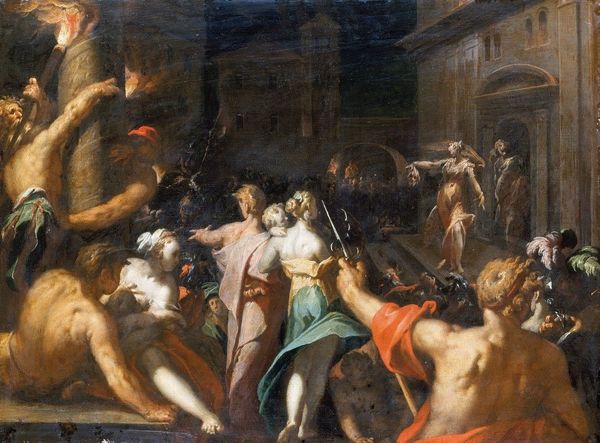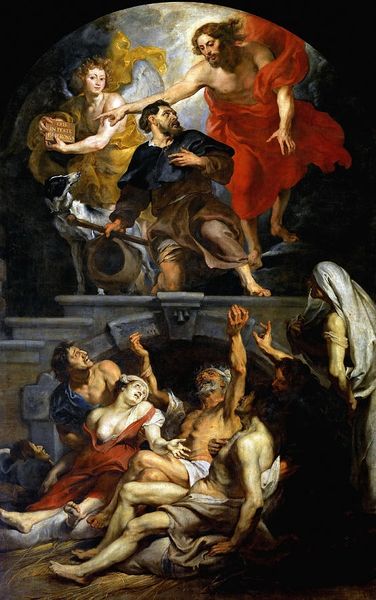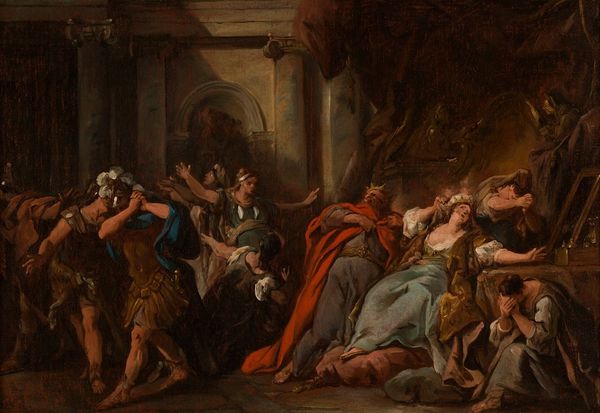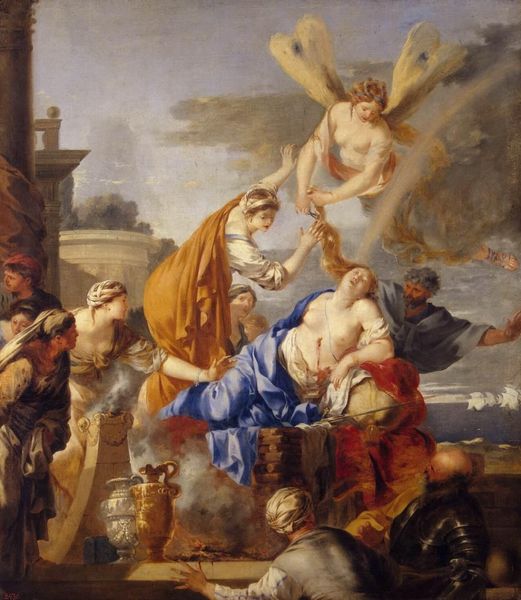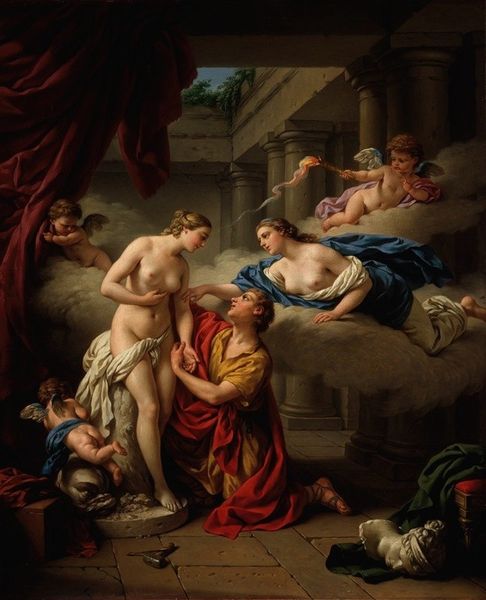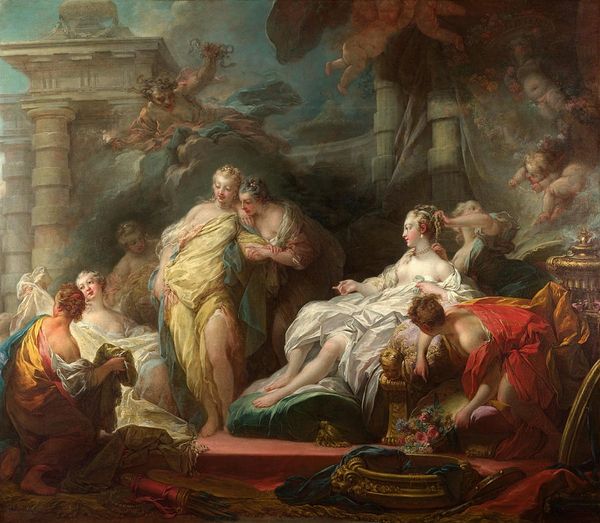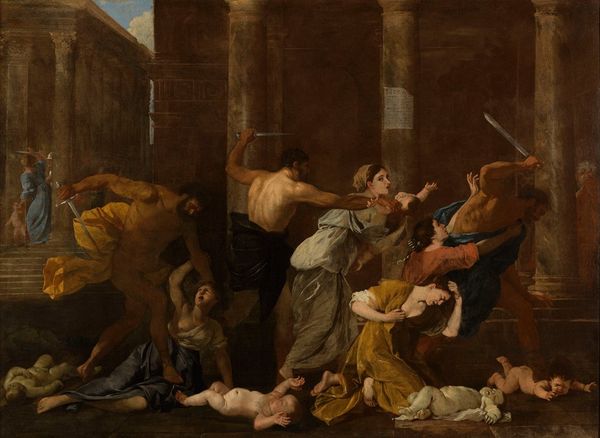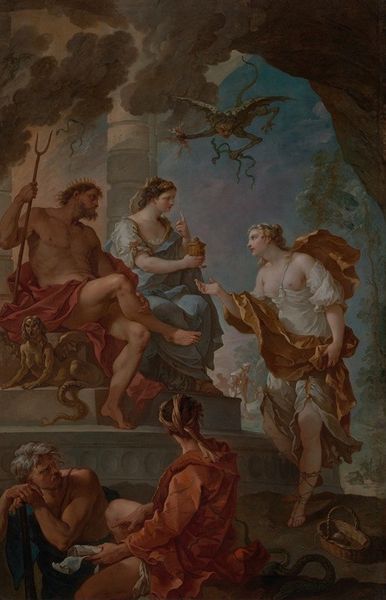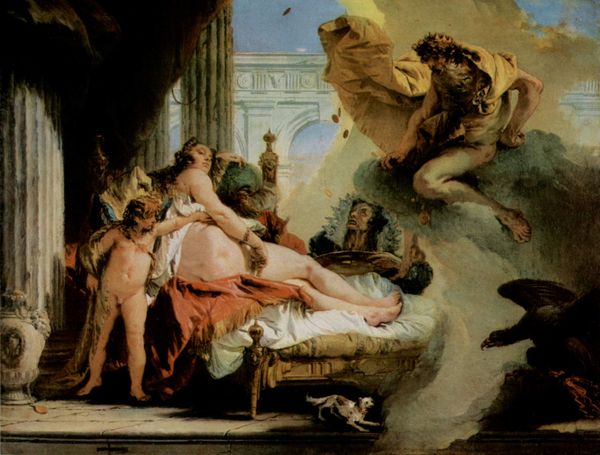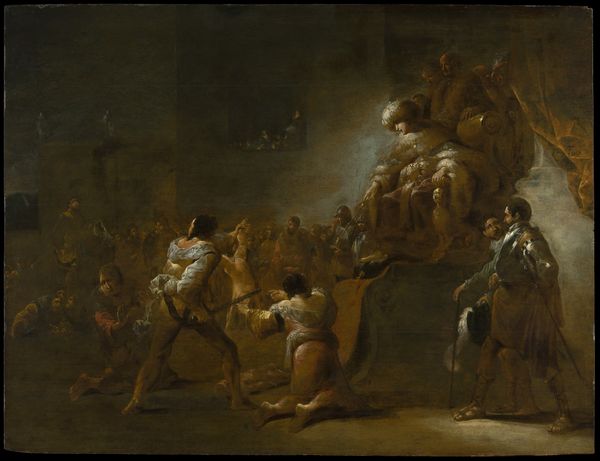
oil-paint
#
allegory
#
baroque
#
oil-paint
#
landscape
#
figuration
#
oil painting
#
mythology
#
genre-painting
#
history-painting
#
nude
#
realism
Copyright: Public Domain: Artvee
Curator: Standing before us is Gerard de Lairesse's 1670 oil painting, "De tuchtiging leidt een behoeftige," which roughly translates to "Discipline Guides the Needy." Editor: Oh, it has this very theatrical feel, doesn’t it? Dramatic light, turbulent figures... it's all rather emotionally charged, wouldn’t you say? Sort of evokes a sense of turmoil. Curator: Indeed. Lairesse was a prominent figure during the Dutch Golden Age, heavily influenced by French Classicism, something visible in his approach to narrative and allegory. He worked across various mediums, and his emphasis on technique, proportion and clear, readable forms was admired. We have here a canvas illustrating not merely a scene, but a principle. Note how the figures, despite being individualized, represent broader concepts relating to governance. Editor: So you're saying the focus is on social commentary rather than individual stories? Though, the scene does trigger empathy with that poor wretch being disciplined. Is she, perhaps, the representation of a nation, being disciplined for something or other? Curator: Possibly. Discipline here appears to be embodied as a formidable, robed woman. We also see allegorical components in other elements. Think of that statuary set in a classical framework as representing ideals and standards within a state. Editor: What interests me is how baroque it feels. The diagonal composition, the swirling figures...the artist's choice is compelling here. It's more than just about painting a concept, though, for me anyway. I get swept up into how art can communicate complex truths in a compelling form. Do you think we might learn much by researching the production process that de Lairesse was involved in? What studio practices influenced this output? Curator: Precisely! Examining the workshop practice, how he employed assistants, the materials he sourced--pigments, canvases--this informs our understanding of the societal infrastructure around art production. How artistic traditions impact his allegories... it reveals much regarding that complex exchange. Editor: Right, because these material conditions and workshop environments, would've ultimately sculpted his expression, wouldn’t they? His realities translated onto canvas. Anyway, it all seems a bit doom and gloom. Curator: Haha! Maybe, maybe not. Art's power is in prompting our personal introspection through societal lenses, wouldn't you agree?
Comments
No comments
Be the first to comment and join the conversation on the ultimate creative platform.
